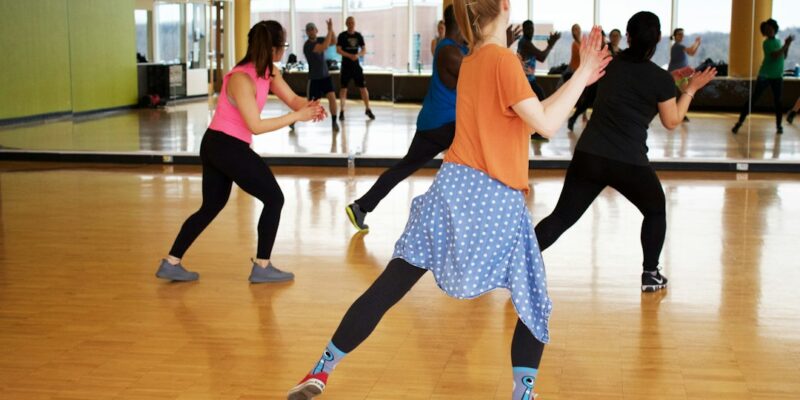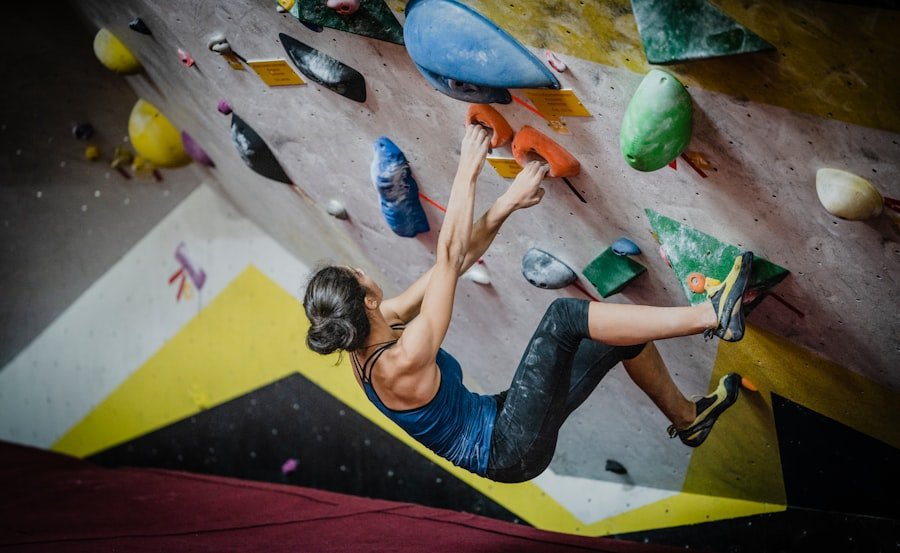
Unlock Your Strength and Flexibility with These Top Calisthenics Exercises
Calisthenics exercises, also known as bodyweight exercises, are a form of strength training that uses the weight of your own body to build muscle and improve fitness. These exercises are performed without the need for any equipment or weights, making them accessible to anyone, anywhere. Calisthenics exercises have been around for centuries and have been used by athletes, military personnel, and fitness enthusiasts alike.
The benefits of calisthenics exercises are numerous. They help to improve strength, flexibility, and endurance, while also promoting overall health and well-being. Calisthenics exercises can be tailored to suit any fitness level, from beginners to advanced athletes. They can be done at home, in a park, or even in a gym. Calisthenics exercises are also a great way to improve body composition and burn calories.
The history of calisthenics exercises dates back to ancient Greece, where they were an integral part of the training regimen for athletes competing in the Olympic Games. The word “calisthenics” itself comes from the Greek words “kalos” meaning beauty and “sthenos” meaning strength. In the 19th century, calisthenics exercises became popular in Europe and America as a way to promote physical fitness and improve health. Today, calisthenics exercises continue to be a popular form of exercise for people of all ages and fitness levels.
Key Takeaways
- Calisthenics exercises use bodyweight movements to build strength and endurance.
- Warm-up exercises are important to prepare the body for the workout and prevent injury.
- Upper body strength exercises include push-ups, pull-ups, and dips.
- Lower body strength exercises include squats, lunges, and calf raises.
- Core strength exercises include planks, sit-ups, and leg raises.
Warm-Up Exercises for Calisthenics Workouts
Warming up before exercising is essential to prepare your body for the physical demands of a workout. It helps to increase blood flow to your muscles, improve flexibility, and reduce the risk of injury. When it comes to calisthenics workouts, warming up is especially important as it involves using your own bodyweight to perform various movements.
Some examples of warm-up exercises for calisthenics workouts include jogging in place, jumping jacks, arm circles, and leg swings. These exercises help to increase your heart rate, warm up your muscles, and improve joint mobility. It is important to start with low-intensity movements and gradually increase the intensity as your body warms up.
To make your warm-up exercises more effective, it is important to focus on proper form and technique. This means maintaining good posture, engaging your core muscles, and moving through a full range of motion. It is also important to listen to your body and modify the exercises if needed. If you have any pre-existing injuries or conditions, it is best to consult with a healthcare professional before starting any new exercise routine.
Upper Body Strength Exercises
Having a strong upper body is important for everyday activities such as lifting, pushing, and pulling. It also helps to improve posture and prevent injuries. Calisthenics exercises offer a variety of upper body strength exercises that can be done without the need for weights or equipment.
Some examples of upper body strength exercises for calisthenics workouts include push-ups, pull-ups, dips, and handstand push-ups. These exercises target the muscles in your chest, shoulders, arms, and back. To perform these exercises with proper form and technique, it is important to engage your core muscles, maintain a neutral spine, and move through a full range of motion.
When starting out with upper body strength exercises, it is important to start with variations that suit your fitness level. For example, if you are unable to do a full push-up or pull-up, you can start with modified versions such as knee push-ups or assisted pull-ups using a resistance band. As you get stronger, you can gradually progress to more challenging variations.
Lower Body Strength Exercises
| Exercise | Repetitions | Sets | Weight (lbs) | Rest Time (seconds) |
|---|---|---|---|---|
| Squats | 10-12 | 3-4 | 50-100 | 60-90 |
| Lunges | 10-12 | 3-4 | 20-50 | 60-90 |
| Deadlifts | 8-10 | 3-4 | 70-120 | 90-120 |
| Leg Press | 12-15 | 3-4 | 100-200 | 60-90 |
| Calf Raises | 15-20 | 3-4 | 20-50 | 30-60 |
Having strong lower body muscles is important for activities such as walking, running, and jumping. It also helps to improve balance and stability. Calisthenics exercises offer a variety of lower body strength exercises that can be done without the need for weights or equipment.
Some examples of lower body strength exercises for calisthenics workouts include squats, lunges, step-ups, and glute bridges. These exercises target the muscles in your legs, hips, and glutes. To perform these exercises with proper form and technique, it is important to engage your core muscles, maintain a neutral spine, and move through a full range of motion.
When starting out with lower body strength exercises, it is important to start with variations that suit your fitness level. For example, if you are unable to do a full squat or lunge, you can start with modified versions such as half squats or assisted lunges using a chair for support. As you get stronger, you can gradually progress to more challenging variations.
Core Strength Exercises
Having a strong core is important for everyday activities such as bending, twisting, and lifting. It also helps to improve posture and prevent injuries. Calisthenics exercises offer a variety of core strength exercises that can be done without the need for weights or equipment.
Some examples of core strength exercises for calisthenics workouts include planks, mountain climbers, Russian twists, and leg raises. These exercises target the muscles in your abdomen, lower back, and hips. To perform these exercises with proper form and technique, it is important to engage your core muscles, maintain a neutral spine, and breathe deeply.
When starting out with core strength exercises, it is important to start with variations that suit your fitness level. For example, if you are unable to hold a full plank position, you can start with modified versions such as knee planks or forearm planks. As you get stronger, you can gradually progress to more challenging variations.
Plyometric Exercises for Explosive Power

Plyometric exercises are a type of calisthenics exercise that involves explosive movements to improve power and speed. These exercises are designed to increase muscle strength and improve athletic performance. Plyometric exercises involve stretching and contracting muscles in quick succession, which helps to build explosive power.
Some examples of plyometric exercises for calisthenics workouts include jump squats, burpees, tuck jumps, and clap push-ups. These exercises target the fast-twitch muscle fibers in your body, which are responsible for explosive movements. To perform these exercises with proper form and technique, it is important to warm up properly, engage your core muscles, and land softly to reduce the impact on your joints.
When starting out with plyometric exercises, it is important to start with variations that suit your fitness level. For example, if you are unable to do a full jump squat or burpee, you can start with modified versions such as half jump squats or step-by-step burpees. As you get stronger and more comfortable with the movements, you can gradually progress to more challenging variations.
Isometric Exercises for Endurance
Isometric exercises are a type of calisthenics exercise that involves holding a static position for an extended period of time. These exercises help to improve muscular endurance and stability. Isometric exercises involve contracting muscles without any movement, which helps to build strength and endurance.
Some examples of isometric exercises for calisthenics workouts include planks, wall sits, static lunges, and glute bridges. These exercises target the muscles in your body and require you to hold a position for a certain amount of time. To perform these exercises with proper form and technique, it is important to engage your core muscles, maintain a neutral spine, and breathe deeply.
When starting out with isometric exercises, it is important to start with variations that suit your fitness level. For example, if you are unable to hold a full plank position for a long time, you can start with modified versions such as knee planks or forearm planks. As you get stronger and more comfortable with the movements, you can gradually increase the duration of the holds.
Stretching Exercises for Flexibility
Stretching is an important component of any exercise routine as it helps to improve flexibility, prevent injuries, and reduce muscle soreness. Calisthenics exercises offer a variety of stretching exercises that can be done before and after workouts to improve flexibility.
Some examples of stretching exercises for calisthenics workouts include standing hamstring stretches, quad stretches, shoulder stretches, and spinal twists. These exercises target the muscles in your body and help to improve flexibility and range of motion. To perform these exercises with proper form and technique, it is important to warm up properly, breathe deeply, and hold each stretch for at least 30 seconds.
When stretching, it is important to listen to your body and avoid any pain or discomfort. Stretching should feel good and should not cause any pain. It is also important to stretch both sides of your body equally to maintain balance and symmetry.
Partner Calisthenics Exercises for Added Fun
Partner calisthenics exercises are a great way to add variety and fun to your workouts. They also help to improve coordination, communication, and teamwork. Partner calisthenics exercises involve working out with a partner and using each other’s bodyweight for resistance.
Some examples of partner calisthenics exercises for added fun include partner push-ups, partner squats, partner planks, and partner sit-ups. These exercises require coordination and communication between partners to perform the movements correctly. To perform these exercises with proper form and technique, it is important to communicate with your partner, engage your core muscles, and move through a full range of motion.
When starting out with partner calisthenics exercises, it is important to choose a partner who is similar in fitness level and strength. It is also important to warm up properly and communicate with your partner throughout the workout to ensure safety and effectiveness.
Cool-Down Exercises for Post-Workout Recovery
Cooling down after exercising is important to gradually bring your heart rate back to normal, prevent dizziness or fainting, and promote post-workout recovery. Cool-down exercises help to reduce muscle soreness, improve flexibility, and promote relaxation.
Some examples of cool-down exercises for post-workout recovery include walking or jogging slowly, stretching exercises, deep breathing exercises, and foam rolling. These exercises help to relax your muscles, improve circulation, and reduce the risk of injury. To perform these exercises with proper form and technique, it is important to listen to your body, breathe deeply, and take your time.
When cooling down, it is important to focus on relaxation and recovery. This is a time to reflect on your workout, stretch out any tight muscles, and allow your body to recover. It is also a good time to hydrate and refuel your body with nutritious foods.
Calisthenics exercises offer a wide range of benefits for people of all ages and fitness levels. They can be done anywhere, anytime, without the need for any equipment or weights. Calisthenics exercises help to improve strength, flexibility, endurance, power, and coordination. They also promote overall health and well-being.
Incorporating calisthenics exercises into your daily workouts can help you achieve your fitness goals and improve your overall quality of life. Whether you are a beginner or an advanced athlete, there are calisthenics exercises that can challenge you and help you reach new levels of fitness.
So why not give calisthenics exercises a try? Start with a warm-up to prepare your body for the workout ahead. Then focus on upper body strength exercises, lower body strength exercises, core strength exercises, plyometric exercises, isometric exercises, stretching exercises, partner calisthenics exercises, and cool-down exercises. Remember to always listen to your body, use proper form and technique, and have fun!
FAQs
What are calisthenics exercises?
Calisthenics exercises are bodyweight exercises that use your own body weight as resistance to build strength, flexibility, and endurance.
What are the benefits of calisthenics exercises?
Calisthenics exercises can improve your overall fitness level, increase your strength and flexibility, and help you build muscle mass. They can also be done anywhere, without the need for equipment or a gym membership.
What are some examples of calisthenics exercises?
Some examples of calisthenics exercises include push-ups, pull-ups, squats, lunges, planks, and burpees.
Can calisthenics exercises be modified for different fitness levels?
Yes, calisthenics exercises can be modified to suit different fitness levels. For example, push-ups can be done on your knees or against a wall if you are a beginner, and can be made more challenging by adding a clap or doing them on one arm.
Can calisthenics exercises be used as a standalone workout?
Yes, calisthenics exercises can be used as a standalone workout or as part of a larger fitness routine. They can be done in a circuit or as individual exercises, depending on your goals and fitness level.
Are calisthenics exercises safe?
Calisthenics exercises are generally safe when done correctly and with proper form. However, it is important to warm up properly and to listen to your body to avoid injury. If you have any pre-existing medical conditions or injuries, it is recommended to consult with a doctor before starting a new exercise routine.

















